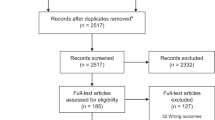Abstract
Objective:
Since the enactment of the Texas Advance Directives Act of 1999, the Memorial Hermann Hospital Medical Appropriateness Review Committee (MARC) MARC reviewed six cases of children in the first year of life, three from the Neonatal ICU and three from the Pediatric ICU. We aimed to describe the characteristics of these patients and the role of the MARC in this process.
Study Design:
A single reviewer retrospectively reviewed the cases for patient diagnoses, demographics, related ethical issues and the actions of the MARC.
Result:
Each of the six patients required life-sustaining therapy, and each patient had a Do Not Resuscitate order on the chart. The MARC determined that it would be appropriate to withdraw life-sustaining support in four of the cases and to continue support in two of the cases. Five of the patients died in the hospital before discharge: two after discontinuation of support, one during the 10-day waiting period, and two died on full support after the Committee determined that continued treatment was medically appropriate. One patient was transferred to another hospital during the 10-day waiting period.
Conclusion:
These cases document the application of the TADA/MARC process in infants, even in circumstances where care was withdrawn without concurrence of the family. We found the MARC process to demand a very high degree of certainty of diagnosis and prognosis to determine continuation of care to be inappropriate. We conclude that the MARC promoted communication and provided additional protections to patients, families, physicians and staff.
This is a preview of subscription content, access via your institution
Access options
Subscribe to this journal
Receive 12 print issues and online access
$259.00 per year
only $21.58 per issue
Buy this article
- Purchase on Springer Link
- Instant access to full article PDF
Prices may be subject to local taxes which are calculated during checkout
Similar content being viewed by others
References
Jecker NS, Schneiderman LJ . Fultility and rationing. Am J Med 1992; 92: 189–196.
Murphy DJ . Do-not-resuscitate orders. Time for reappraisal in long-term care institutions. JAMA 1988; 260 (14): 2098–2101.
Medical Futility in End-of-life Care. Report of the council on ethical and judicial affairs. JAMA 1999; 281 (10): 937–941.
Truog RD, Brett AS . The problem with futility. NEJM 1992; 326 (23): 1560–1564.
Lantos JD, Singer PA, Walker RM, Gramelspacher GP, Shapiro GR, Sanchez-Gonzalez MA et al. The illusion of futility in clinical practice. Am J Med 1989; 87: 81–84.
Schneiderman LJ, Jecker NS, Jonsen AR . Medical futility: it's meaning and ethical implications. Ann Intern Med 1990; 112 (12): 949–954.
Helft PR, Seigler M, Lantos JD . The rise and fall of the futility movement. N Engl J Med 2000; 343 (4): 293–296.
Fine RL, Mayo TW . Resolution of futility by due process: early experience with the Texas advance directives act. Ann Intern Med 2003; 138 (9): 743–746.
Halevy A, Brody BA . A multi-institutional collaborative policy on medical futility. JAMA 1996; 276 (7): 571–574.
Texas health and safety code §166.046. 1999.
Avery GB . Futility considerations in the neonatal intensive care unit. Semin Perinatol 1998; 22 (3): 216–222.
Tyson J . Evidence-based ethics and the care of premature infants. Future Child 1995; 5 (1): 197–213.
Stevenson DK, Araigno RL, Kutner JS, Raffin TA, Young EWD . The baby doe rule. JAMA 1986; 255 (14): 1909–1912.
Angell M . The baby doe rules. NEJM 1986; 314 (10): 642–644.
Truog RD . Tackling medical futility in Texas. New Engl J Med 2007; 357 (1): 1–3.
Kopelman LM . The best-interests standard as threshold, ideal, and standard of reasonableness. J Med Philosophy 1997; 22: 271–289.
Kopelman LM . Rejecting the baby doe rules and defending a ‘negative’ analysis of the best interests standard. J Med Philosophy 2005; 30: 331–352.
Fine RL, Whitfield JM, Carr BL, Mayo TW . Medical futility in the neonatal intensive care unit: hope for a resolution. Pediatrics 2005; 116 (5): 1219–1222.
Department of health and human services, 45 CFR.F.R. part 1340.15. 1985.
Duff RS, Campbell AGM . Moral and ethical dilemmas in the special-care nursery. New Engl J Med 1973; 289 (17): 890–894.
Author information
Authors and Affiliations
Corresponding author
Rights and permissions
About this article
Cite this article
Eason, E., Castriotta, R., Gremillion, V. et al. Withdrawal of life sustaining treatment in children in the first year of life. J Perinatol 28, 641–645 (2008). https://doi.org/10.1038/jp.2008.58
Received:
Revised:
Accepted:
Published:
Issue Date:
DOI: https://doi.org/10.1038/jp.2008.58
Keywords
This article is cited by
-
In response to: Withdrawal of life-sustaining treatment in the first year of life
Journal of Perinatology (2009)
-
Response to ‘Withdrawal of life-sustaining treatment in the first year of life’
Journal of Perinatology (2009)



